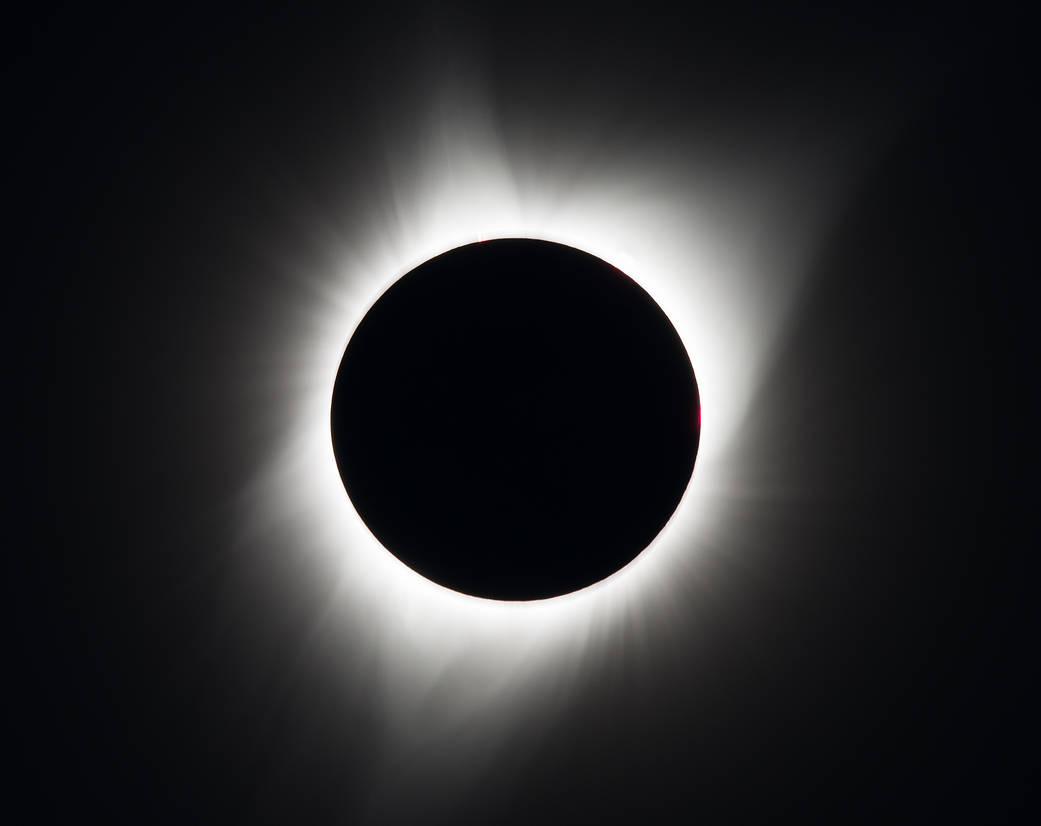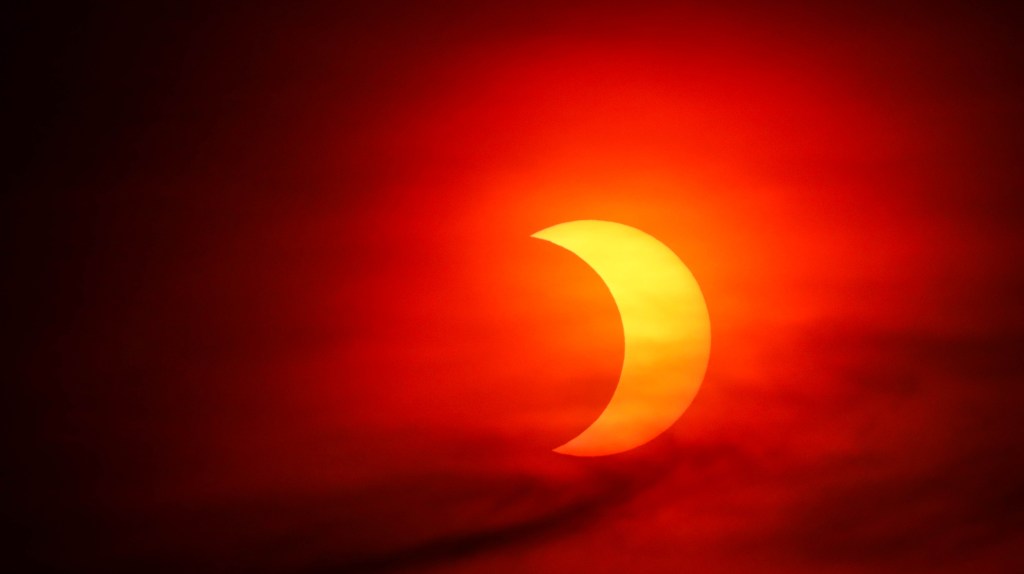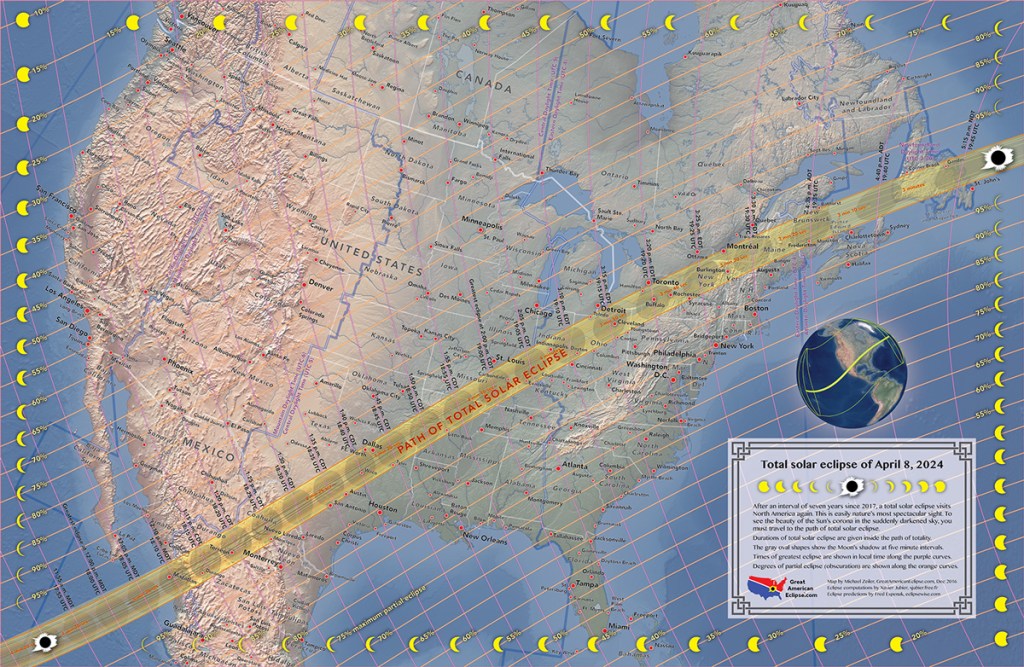
We are officially at the T minus one-year mark for the next trans-American solar eclipse. April 8, 2024, will mark seven years since the last solar eclipse to transverse the nation. Here’s all you need to know to prepare for next year.
The 2017 solar eclipse brought out millions of observers across the United States and North America. It was the first eclipse to have a path of totality that crossed the western and eastern shores of the United States since 1918.
Entering over Oregon and exiting over South Carolina, the Moon’s shadow, the moment of the greatest eclipse lasted for two minutes and 40 seconds. Spanning 14 states, the moon’s shadow took only one hour and 28 minutes to cross the continent.
What is a solar eclipse?
Simply put, a solar eclipse is when the moon, in the new moon phase, obscures part of or all of the sun casting a shadow on Earth. This alignment happens every new moon, but only sometimes does the moon cast a shadow on Earth due to its orbit, which is not perfectly flat with respect to the plane of the solar system.
It’s also important to know the difference between a total, partial, and annular solar eclipse. Total solar eclipses happen less often because the entire Moon must obscure the sun. This means that the Moon must not only line up with the sun but also be big enough to cover it entirely because the Moon’s orbit brings it slightly closer and farther away from the Earth.

A partial eclipse is when the moon only covers part of the sun and generally happens more frequently than total eclipses. Annular eclipses are very similar to total eclipses, however, they occur at the point in the moon’s orbit where it appears slightly smaller than the sun and does not cover it fully.
The next big eclipse
In 2024, those in North America will get another chance to view an eclipse from the United States. With it will come record numbers, like a maximum duration of totality of four minutes and 27 seconds. It will span 13 states, one less than 2017’s eclipse, and first enter over Texas, departing over Maine.

Totality will also be visible in parts of Mexico and Canada, making this a three-country eclipse. In terms of the US, the Moon’s shadow will take one hour and eight minutes to span the United States from south to north.
Start planning now
It may seem excessive, but planning where to be, what to bring, and how to get there a year out is not uncommon. Essential items like solar filters, for eyes and cameras, can become hard to get when the eclipse gets nearer. Travel to major cities such as Dallas, Detroit, and Toronto can become expensive as the event nears.
By no means, is it necessary to have flights booked and suitcases in the car right now, but it would be a good time to start digging up old solar filters or purchasing new ones. For the photographers out there, now would also be a good time to start planning what landmarks would be best to include in your shot and at what angle the sun will be during the eclipse.
Overall, this eclipse is not one to miss, especially if you reside near the path of totality. After next year, the next total solar eclipse that will be visible from the United States is on August 23, 2044. Here’s the path of totality, in case you want to pack your bags tomorrow…
If you miss that, 2099 here we come!
FTC: We use income earning auto affiliate links. More.




Comments